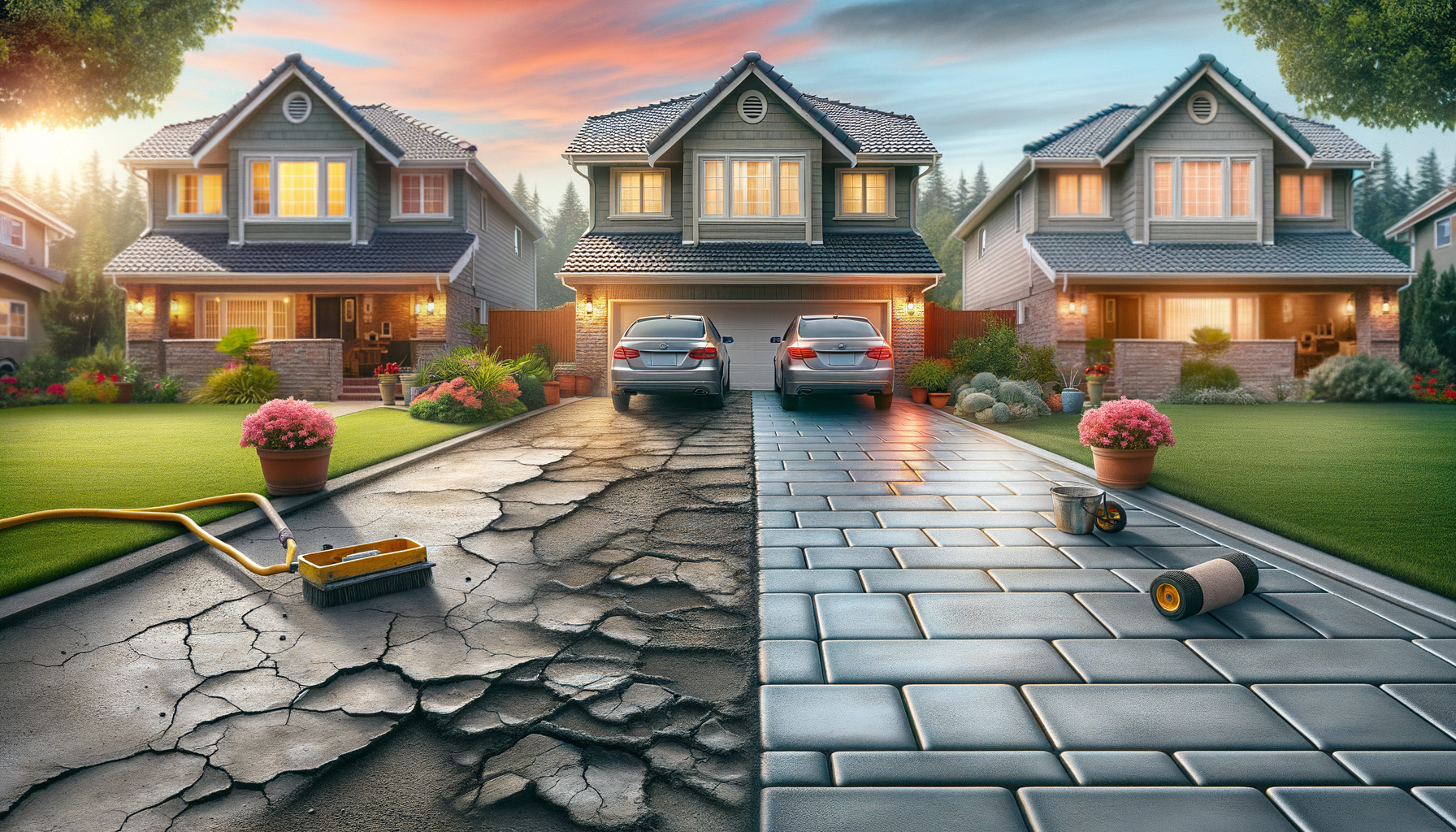Understanding Concrete Resurfacing
Concrete resurfacing is an innovative process that allows homeowners to give their old, worn-out concrete surfaces a fresh, new look without the need for complete replacement. This method involves applying a thin layer of a specialized compound over existing concrete, which can be customized with various colors, textures, and patterns. The process not only improves the aesthetic appeal but also enhances the durability and longevity of the surface.
The importance of concrete resurfacing lies in its ability to transform spaces at a fraction of the cost of new installations. It is particularly beneficial for driveways, patios, garage floors, and walkways that have suffered from weather-induced wear and tear. By opting for resurfacing, property owners can avoid the extensive labor and costs associated with removing old concrete and pouring new slabs.
Moreover, concrete resurfacing is an environmentally friendly option. By reusing the existing concrete, it reduces the need for raw materials and minimizes waste. This sustainable approach aligns with the growing trend towards eco-conscious home improvement solutions.
Benefits of Concrete Resurfacing
Choosing concrete resurfacing over replacement offers numerous advantages:
- Cost-Effectiveness: Resurfacing is significantly cheaper than tearing out old concrete and laying new slabs.
- Time Efficiency: The process is quicker, often completed in just a few days, minimizing disruption to your daily life.
- Customization Options: Homeowners can select from a variety of finishes, colors, and patterns to match their design preferences.
- Improved Durability: Resurfaced concrete can withstand harsh weather conditions and heavy traffic, extending the life of the surface.
- Increased Property Value: A well-maintained and aesthetically pleasing exterior can enhance the curb appeal and overall value of a home.
By investing in concrete resurfacing, homeowners not only save money but also enhance the functionality and appearance of their property.
Types of Concrete Resurfacing Materials
When it comes to concrete resurfacing, several materials are available, each offering unique benefits:
- Polymer Overlays: These are popular for their flexibility and strength. They adhere well to existing surfaces and can be customized with various textures and colors.
- Stamped Concrete: This option mimics the appearance of stone, brick, or tile, providing a high-end look without the associated costs. It’s ideal for patios and driveways.
- Microtoppings: These are thin layers applied to create a smooth finish. They are perfect for indoor spaces like basements or garages.
- Self-Leveling Overlays: Used to correct uneven surfaces, these overlays provide a flat, smooth finish and are often used in preparation for other flooring materials.
Each type of resurfacing material has its specific applications and benefits, making it crucial for homeowners to assess their needs and consult with professionals to choose the most suitable option.
Preparing for Concrete Resurfacing
Proper preparation is key to a successful concrete resurfacing project. Here are essential steps to ensure the best results:
- Inspection: Assess the condition of the existing concrete to identify any cracks or damage that need repair before resurfacing.
- Cleaning: Thoroughly clean the surface to remove dirt, oil, and debris, ensuring a strong bond between the old surface and the new overlay.
- Repair: Fill any cracks or holes with a suitable concrete repair product to create a smooth base for the overlay.
- Priming: Apply a primer to enhance adhesion, especially if using polymer-based overlays.
By following these preparation steps, homeowners can ensure that their resurfacing project is not only aesthetically pleasing but also durable and long-lasting.
Conclusion: Making the Right Choice
Concrete resurfacing is a practical and efficient way to breathe new life into old surfaces. By understanding the various materials and methods available, homeowners can make informed decisions that suit their aesthetic preferences and functional needs. Whether enhancing a driveway’s appeal or renovating a patio, the benefits of resurfacing are clear: cost savings, increased property value, and improved durability.
Ultimately, consulting with professionals and considering the specific requirements of your project will ensure a successful outcome. Embrace the opportunity to transform your space with concrete resurfacing and enjoy a renewed environment that stands the test of time.




Leave a Reply